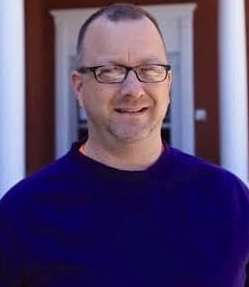By Tom Travis
I have attempted to dissect the reasons why I chose to leave my job at 50 years old after more than 10 years. I think I’ve figured out the reasoning but it is deeply personal. And I’m more likely to tell you over a cup of coffee at Good Beans Cafe than in a published article. So let’s have coffee.
In the meantime, I’m taking on a new adventure, as a community journalist here at East Village Magazine. In my career of being a journalist, now at seven months, I’ve learned so much. My journalistic mentor, the editor of this magazine, is a great teacher and offers a wealth of knowledge about writing and journalism.
Some things have come naturally for me in this new endeavor: I’m immensely curious, love the power of questions, I’m a very good listener and keen observer (sometimes too keen, but not overly keen).
In other parts of my journalistic training, I’ve needed a lot of guidance and continue to be mentored by my new boss at EVM. When I turn in a story there are things I often hear from her, albeit less and less with each story I write—but still she dives right in to correct my ways.
She’ll say things like, “That’s not the lead, Tom”, “Where IS the lead of the story, Tom?”; “The paragraphs are too long, cut them down.”; or “I don’t understand this paragraph,”; or “This needs a lot of work.” Yet, she’ll sometimes end our conversation by saying—“But, Tom, you’re doing great.”
Most of the stories I’ve been writing for EVM have been about city council. I’ve written a few others about different subjects, but I’ve been assigned Flint City Hall as my beat. I’m not a particularly political person and have watched almost zero news reports of the impeachment. I allow my friends who seem to be glued to the TV news stations and reading voraciously about the political wrangling in Washington to inform me.
Among the terms we’ve been using at EVM to describe the happenings at city council are “contentious,” “debacle,” and my personal favorite “brouhaha.” I can now say in my extensive journalistic career I’ve covered two administrations at City Hall. And these two administrations are as different as night and day.
I enjoyed covering Mayor Karen Weaver. She is a strong woman and didn’t seem afraid or timid to lead. Like any politician, it takes time to be comfortable with the press. It took about five months for Weaver’s administration to trust me and know that I wasn’t “out to get them.” Then, to the surprise of many, including me, in November, the Weaver administration was gone. Mayor Sheldon Neeley’s administration leads differently. More on that in the months to come.
After my second or third city council meeting I began emailing my editor during the meeting saying things like, “I can’t believe this?”; “I’m still here; it’s been five hours now.” The editor was encouraging and offered advice: “Use your observation skills and look for a nugget of a news story out of the chaos.”
I was surprised mostly at the racist comments and words flung at each other in an ethnically diverse group of professional people. It has caused me to reflect on my own experience, as a white kid who grew up in Flint Township, of what race means. As I’ve lived, worshipped and worked in downtown Flint for more than 10 years now, I see Flint is a city very familiar with racism. Race—good and bad—surrounds me every day.
I’ve talked to a lot of you about this and I’ve continued to read, as I always have, in an effort to learn about race and racism. One fellow white friend recently reminded me: We especially can’t tell people of color how to experience racism, because we don’t really experience it. I appreciate that and understand what she’s saying.
What has struck me most in my first months of being the eyes and ears of the community is this: I have been shocked at how race is an overwhelming factor in the city. And that has caused me to see the significance of race in our society in ever-sharper ways.
My mind has gone back to one of the most eye-opening moments for me about race—a full 30 years ago—that I still remember vividly. While attending UM-Flint in the early 1990s, my best friend, Darrin, was an African American guy. He and I have remained good friends over the years even though we’ve both lived all over the country and even in different countries.
One day after class, my friend and I were walking from UM-Flint to his job at Genesee Bank in what was then Genesee Towers. We were standing at the corner of First Street and Harrison. All the cars were stopped for the red light. My friend chuckled and said, “Well, that’s interesting.” I asked him what he was talking about.
He said, “Every day when I stand at this corner and the cars stop, I hear all their doors locking, and I see all the drivers locking their doors or pushing the electric lock button.”
I still didn’t get it. I said, “Okay, what does that mean?”
He said, “Because I’m black, Tom. But since I’m with you, a white guy, there’s no locking of the doors.” I will never forget this moment for the rest of my life. It showed me at that young age how people of color are treated every day in this white-dominated world. I think this is at the heart of racism — fear and control.
Fast forward 30 years to me sitting in a city council meeting, hearing professionally educated people calling out demeaning racist names. That makes my heart hurt. I’m a lover of people and don’t understand why anyone would want to demean or intentionally hurt someone, let alone a colleague, with hurtful words or gestures.
Hand motions and words matter. Certain motions and words evoke memories of pain—even if done in fun. If you’re not part of that particular culture you can’t truly appreciate the pain and hurt that behavior evokes.
For the last 10 years I’ve had the pleasure of working at the largest homeless shelter in Genesee County, Carriage Town Ministries [carriagetown.org]. I’ve worked with people struggling with homelessness, mental health situations, addictions and behavioral issues.
Flint City Council would do well to begin each meeting by committing together that they will treat each other with dignity and value each person during the meeting. They can agree to disagree but still honor each other as respected human beings.

Tom Travis (Photo by Josh Kennedy)
As a journalist I’ve learned that not everyone likes you, especially politicians. They look at you skeptically and wonder what your agenda is. At EVM we have one agenda: we report what is said and done. We don’t do “gotcha” journalism, which tries to trick someone into saying a particular answer. My editor’s mantra to people who complain what we write about them is, “if you want us to write something else about you, then do and say something else.”
So I’m leaving a job I’ve had for 10 years with a sense of peace and accomplishment, looking forward to telling the stories of this community with the dignity and respect that it deserves.
Banner photo of downtown Flint at night by Tom Travis.
Tom Travis, who as of Feb. 1 is EVM’s assistant editor focusing on our Democracy Beat, can be reached at tomntravis@gmail.com.


You must be logged in to post a comment.